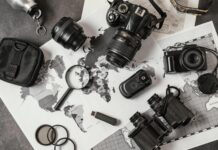2Sebastião Salgado on a life in photography

Sebastião Salgado, 73, has not taken kindly to the age of iPhone cameras and images that disappear within seconds. He much prefers tattered family albums with pictures looked at again and again, until the edges are frayed from years of use, but the memories remain strong and pass from one generation to the next. Salgado spoke to a small crowd Tuesday night at the Getty Center to coincide with an exhibition at Bergamot Station and a retrospective of his work in San Diego.
He spoke about his life as a photographer and made a very distinct point: “Today there are very few photographers,” he said, “but there are a lot of people with cameras.” He feels that a photographer is one who puts his life into photography, 24/7, who has become truly comfortable with his subjects, something that can only be gained over time. Indeed, as many of his beautiful images flashed on the screen, images well-known to any devotee of documentary photography, one seemed to epitomize what he was talking about.
MOPA San Diego
Sebastião Salgado: Genesis
24 May, 2017 – 30 Sep, 2017
Peter Fetterman Gallery
Sebastião Salgado: A Life in Photography
3 June – 2 September, 2017
3Ones to Watch: Çağdaş Erdoğan

“I believe Turkey is photographed deficiently,” says Çağdaş Erdoğan. “The photographs we see of Turkey are propaganda for the nationalist movement, or they’re Orientalist images for the outer world since these are what they want to see.”
Erdoğan, 24, is a Kurdish Turk born in a small town in the east of the country, who has established himself as one of the leading young photojournalists in a newly authoritarian and conservative Turkey. While in the middle of a sociology degree in the city of Konya, he was inspired by George Georgiou’s series Fault Lines: Turkey/East/West.
After meeting his mentor, Turkish documentary photographer Kürşat Bayhan, Erdoğan quit the course and moved to Istanbul in 2013. “Secularism has been suppressed to the point where it is almost invisible,” says Erdoğan. “I wanted to find a way to scrutinise Turkish society’s relationship with reality.”
“Many photojournalists can’t work in Istanbul,” says Bayhan. “But he moved to the city’s Gazi district, one of the most dangerous in Istanbul, to tell the unknown stories of Turkey.”
4Last of the Colombian Cowboys

The life of a Llanero – or Colombian Cowboy – is tough. The six-month winters that plague the dramatic plains mean rain almost every day; the hardy men must ride their horses through overflowing rivers, teeming with insects and fish, away from the floods to dry land. Summers bring a feverous, muggy heat, unbearable for the average human or pedestrian horse. But the Llanero’s arduous, semi-nomadic existence is rooted in five centuries of wisdom and succeeds because of a deep respect for the land they have conquered.
It was this soulful stoicism that first caught the imagination of photographer Juanita Escobar. She traveled to the region aged 19 to document the spectacular mix of wildlife, flora and fauna for the Natural Reserve Palmarito in the Casanare State. But during her work, a chance encounter would change her path and purpose.
5No Medium Can Ever Be ‘Finished’: Iranian Photographer Mehrdad Naraghi

With millions posting photos online every day, some people believe that professional photography is in jeopardy. Iranian fine art photographer Mehrdad Naraghi is not one of them.
“The simplification of photography provides more chances for artists to use the medium to express themselves,” says Naraghi, whose project, “Japanese Gardens,” won Paris’ Musée du Quai Branly’s 2014 PHOTOQUAI Residencies Award.
But the ubiquitousness of digital technology does carry some dangers, notes Naraghi. “If a photographer is preoccupied with technique more than an internal search and a meaningful way to express him or herself, things become difficult,” Naraghi, who was born and raised in Tehran, told me in a recent interview in New York City.
619th-Century American Photography East of the Mississippi

In an unusual inversion of center and periphery, nineteenth-century photographs of the American West have attracted far more attention than those taken in the more settled, less majestic East. In fact, the exhibition East of the Mississippi, currently on view at the National Gallery in Washington, DC, is the first US museum survey of 19th-century photographs of landscapes and other scenic “views,” including urban imagery, that is limited to the eastern United States. While western scenes fed into the American ethos of conquest toward the continent’s farther reaches and summoned a sense of awe toward the sublime landscape, eastern photography is less grandiloquent and ranges more widely, its subjects more varied and socially representative. The photographs in East of the Mississippi are frequently utilitarian, sometimes unabashedly commercial — and often quite marvelous to look at.
7‘History of Photography’ offers a rare look at original master prints

Thanks to cellphone cameras and the Internet, photography is everywhere. People use it for everything from creating fine art to recording mundane aspects of daily life.
Digital technology at the turn of our century has expanded photography’s possibilities, just as cheap “Brownie” cameras and commercial film processing services did at the turn of the last century.
The new “History of Photography” exhibit at the Headley-Whitney Museum of Art tells this story with more than 90 pictures, including examples of early photography processes and rare original prints of images by history’s iconic photographers.
The exhibits opened May 27 and continue through Sept. 3 at the Headley-Whitney, 4435 Old Frankfort Pike. More information: Headley-whitney.org.






















